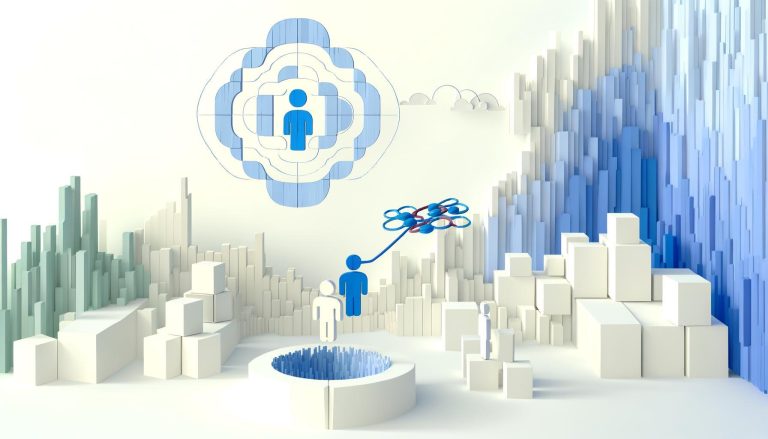Seasonal Affective Disorder (SAD) is a type of depression that occurs at specific times of the year, typically in winter. It can significantly impact productivity and well-being in the workplace. Artificial Intelligence (AI) presents innovative strategies to manage SAD effectively, ensuring employees remain productive and mentally healthy. This article explores how AI can be leveraged to manage SAD in the workplace, providing valuable insights and practical tips.
Understanding Seasonal Affective Disorder (SAD)
SAD is a form of depression that follows a seasonal pattern, usually beginning in late fall and continuing through winter. Symptoms include:
- Depressed mood most of the day.
- Loss of interest in activities once enjoyed.
- Low energy and fatigue.
- Sleep disturbances.
- Changes in appetite or weight.
- Difficulty concentrating.
Recognizing and addressing these symptoms is crucial in maintaining a healthy and productive workplace.
AI Strategies to Manage SAD in the Workplace
1. AI-Powered Mood Tracking
AI can play a pivotal role in tracking employees’ moods and identifying patterns indicative of SAD. Implementing AI-powered mood tracking tools can provide real-time insights into employees’ emotional states.
- How it works: Employees report their mood at regular intervals, and the AI tool analyzes this data to identify trends.
- Benefits: Early detection of mood changes can lead to timely interventions, preventing severe depressive episodes.
2. Personalized Interventions and Support
AI can personalize interventions based on individual needs. By analyzing mood data, the AI system can recommend tailored coping strategies and support resources.
- Examples of personalized interventions include:
- Light Therapy: Suggesting exposure to bright light during work hours to combat the lack of natural sunlight.
- Exercise Recommendations: Encouraging physical activities that are known to improve mood and energy levels.
- Mindfulness Practices: Recommending mindfulness and relaxation exercises to reduce stress and enhance well-being.
3. Virtual Mental Health Assistants
AI-driven virtual assistants can provide constant support to employees, offering guidance and resources whenever needed.
- Features: These AI assistants can answer questions about mental health, provide tips for managing stress, and offer conversational support.
- Accessibility: Available 24/7, ensuring employees have support even outside of regular work hours.
4. Predictive Analytics for Proactive Measures
Predictive analytics can forecast periods when employees might be more susceptible to SAD. By analyzing historical data and environmental factors, AI can help prepare the workplace for these periods.
- How it works: The system uses data such as weather patterns, work schedules, and past incidents of SAD to predict risk periods.
- Proactive Steps: Employers can then implement measures such as increased light exposure, flexible work hours, and extra support during predicted high-risk times.
Practical Tips for Implementing AI Strategies
Create a Supportive Work Environment
The foundation of managing SAD starts with creating a supportive work environment. Here are some practical tips:
- Open Communication: Encourage open dialogue about mental health issues without stigma.
- Training Programs: Educate managers and employees about recognizing and supporting colleagues with SAD.
- Flexibility: Offer flexible work arrangements to accommodate employees’ needs during difficult times.
Invest in Technology
Implementing advanced technology is key to leveraging AI effectively. Consider the following tips:
- Choose the Right Tools: Select AI-powered tools that are user-friendly and tailored to your organization’s needs.
- Data Privacy: Ensure that any AI systems used adhere to strict data privacy standards to protect employees’ information.
- Regular Updates: Keep AI systems updated with the latest advancements to maximize their effectiveness.
Encourage Employee Participation
For AI strategies to be effective, employees need to participate actively:
- Feedback Mechanisms: Implement systems where employees can provide feedback on AI tools and interventions.
- Incentives: Offer incentives for employees to regularly use mood tracking and support tools.
- Training: Provide training sessions to help employees understand and utilize AI resources effectively.
Monitor and Adjust Strategies
Continuously monitoring the effectiveness of AI strategies is essential for long-term success. Here’s how to do it:
- Regular Assessments: Conduct regular assessments to evaluate the impact of AI interventions on employee well-being.
- Adjustments: Be prepared to adjust strategies based on assessment results and employee feedback.
- Stay Informed: Keep up with the latest research and advancements in AI and mental health to enhance your strategies.
Conclusion
AI offers innovative and effective strategies for managing Seasonal Affective Disorder in the workplace. From AI-powered mood tracking to personalized interventions and predictive analytics, these tools can help create a supportive work environment that promotes mental health and productivity. By implementing these strategies and ensuring active participation from employees, organizations can mitigate the impact of SAD and foster a healthier, more supportive workplace.
For a comprehensive approach to tracking moods and creating personalized goals, consider using the Zenora App. Its features include mood and habit tracking, personalized insights based on journal entries, and goal-setting, all designed to support mental well-being in the workplace.





